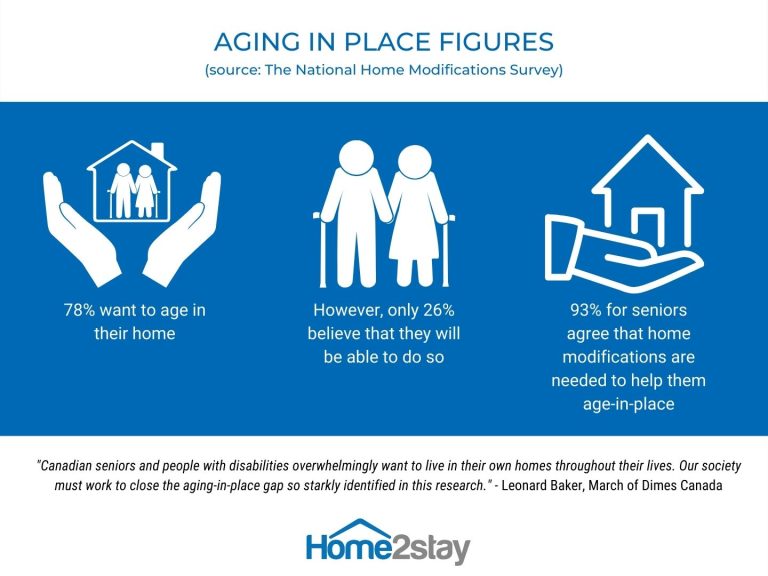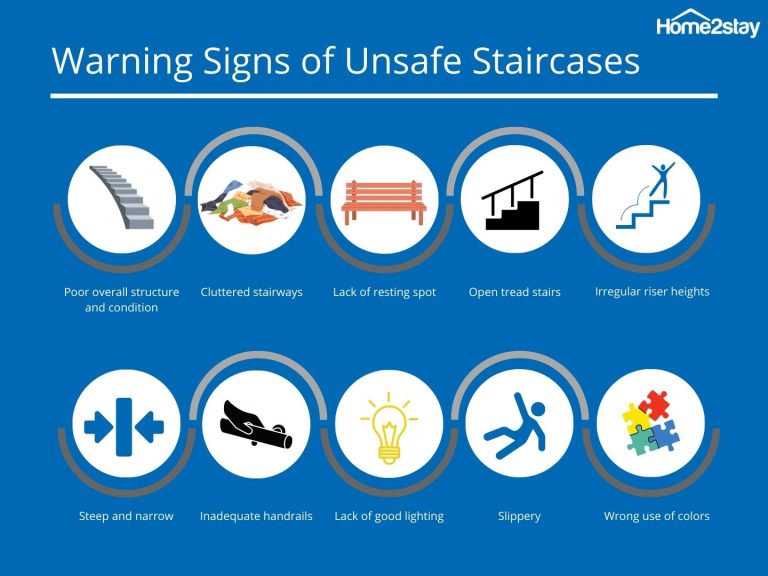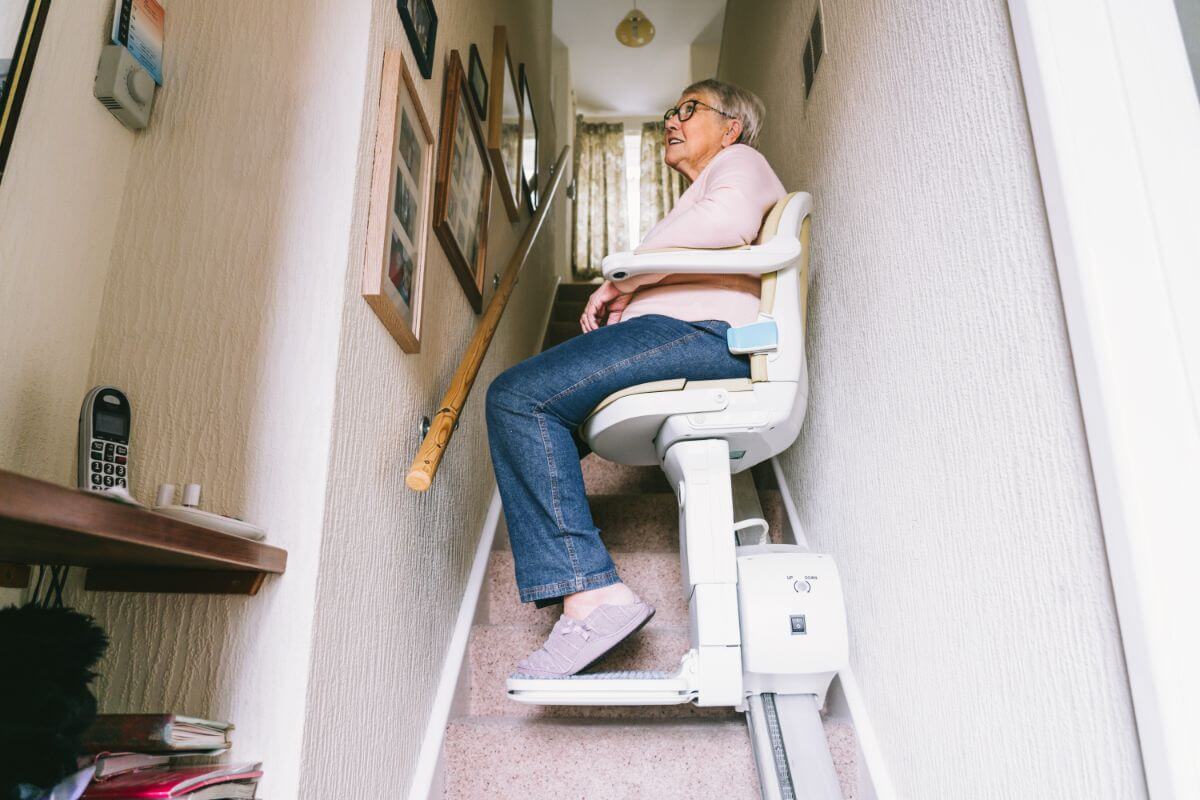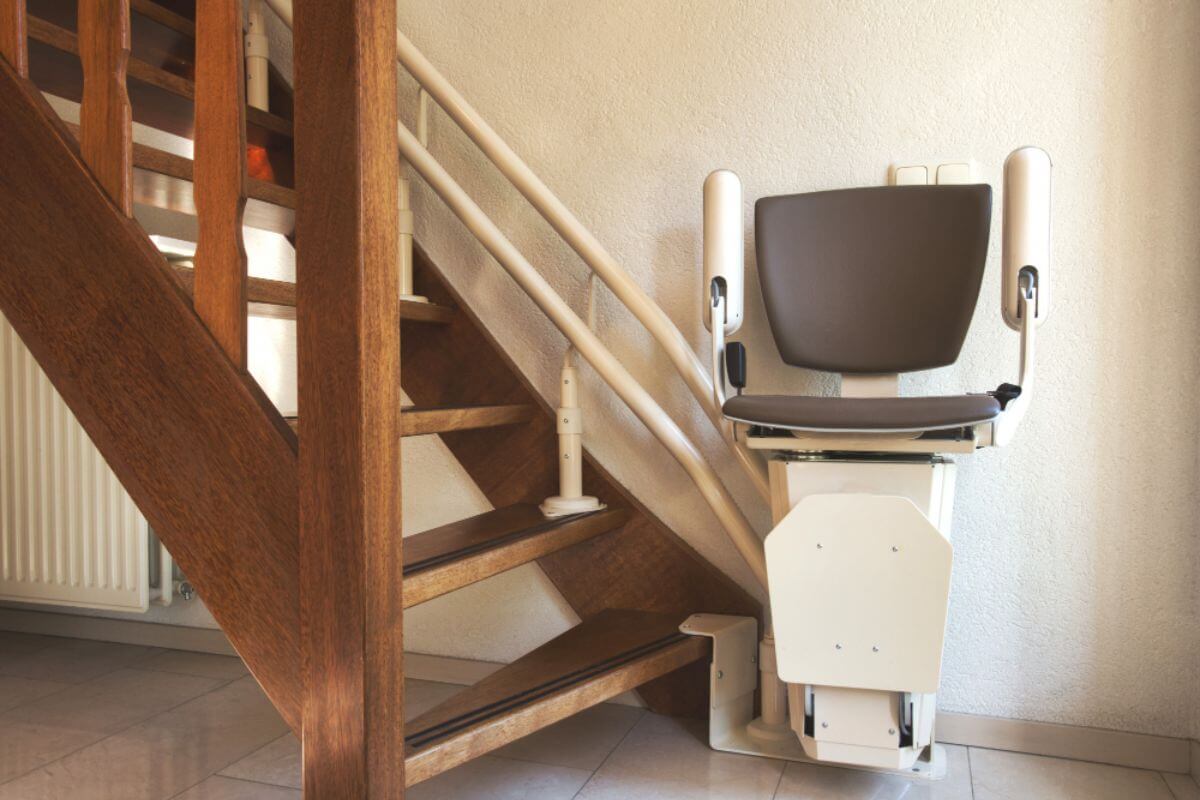10 Warning Signs Of Unsafe Staircases and How To Resolve Them

One of my favorite lines from a book is from Dorothy in The Wizard of Oz- “There is no place like home.”
Indeed, the home is our sanctuary and safe haven. I know that many of us would like to grow old in the home we love, right?
However, aging in place entails careful thought and preparation. Chronic pain, diminished flexibility, impaired mobility, and poor vision make it challenging to navigate our once familiar and beloved home as we enter into our senior years.
According to a new national poll on aging-in-place and home modifications conducted by March of Dimes Canada, Canadians face an “aging-in-place gap,” with 78% of people wanting to age in their current houses but only 26% believing they will be able to do so.
President and CEO of March of Dimes Canada Leonard Baker stated, “Canadian seniors and people with disabilities overwhelmingly want to live in their own homes throughout their lives. Our society must work to close the aging-in-place gap so starkly identified in this research.”

One of the major concerns that always come up is navigating the home stairway and limiting the risk of falling. Recent research from the Canadian Institute of Health Information (CIHI) clearly demonstrates that staircase anxieties are justified: Unintentional falls are the most prevalent type of injury in Canada, with about 1,800 emergency department visits and 417 hospital admissions reported every day last year.
Falls can be fatal for senior citizens. Traumatic brain injuries and fractured bones can occur as a result of falls. These injuries may necessitate surgery and a lengthy stay in the hospital.
How do you make your stairways safer for seniors and all members of your household? Let’s take a look at the warning signs of unsafe staircases and how to resolve these issues:
Poor overall structure and condition
Checking the overall structure and condition of the stairways means not only checking the surface, but also the understructure. These are the main components to check:
- The treads – The treads may show one of the first symptoms of the deteriorating condition of a staircase: when they’re loose, missing, or just worn out, it’s likely that it’s nearing the end of its life. The presence of splinters should be treated with caution, as well. As the staircase becomes sensitive to outside stresses, cracked threads can quickly cause more damage.
- The understructure – Even if your staircase appears to be in good condition from the surface, you should still check the understructure- this supports the staircase and is frequently the first area where foundational problems occur. Storms, strong winds or simply the passage of time may cause the house to shift, causing the staircase to move. If you discover that the understructure is uncomfortable or broken, it’s time to replace it.
- Detached parts – The handrail or fitting post coming off is the most obvious evidence that it’s time to replace your outdated staircase! If either of these parts becomes loose, they will very likely fall off in the near future, further undermining an already unstable staircase.
It is best to get the advice of a professional contractor when planning to inspect and fix the overall structure and condition of your stairs. They can readily identify problem areas and provide expert service in resolving them.
Cluttered stairways
Are you guilty of leaving your mail, laundry baskets, and other items, along your stairways? Stop this habit.
Keep “in transit” goods away from your staircases, and eliminate any furniture or decorations that could cause trips and falls.
Clearing your stairways of debris and clutter is not only free, but it’s also one of the easiest ways to make them safer.
Lack of resting spot
Going up and down the stairs can be exhausting, especially for older people or those with physical disabilities.
If you have a long staircase, consider adding a bench to a landing or curve, to provide a safe spot to relax- they can provide a much-needed break from the exertion of climbing up and down the stairs.
Open tread stairs
An open tread or floating stairs design may look pretty, but it’s not recommended if you have seniors or small kids in your home. The layout can easily fool the eye and make a person dizzy, posing a hazard to people of all ages and abilities.
While redoing the stairs may be quite expensive, you can simply cover up the open spots to make your stairs friendlier to everyone.
Irregular riser heights
The stair riser is the vertical part at the back of each tread that determines the distance between each step. This is usually a single wooden section that runs the length of the staircase.
Needless to say, varying riser heights is a recipe for disaster. Steps that are too tall, short or uneven can be dangerous to use. This can easily cause someone to trip or fall down the stairs.
Your stair treads should be uniform and within set dimensions.
The maximum step riser height in Canada is 180mm or 7 inches. The industry standard for riser variation on a staircase is 3/8 of an inch. Each tread’s nose shall not protrude more than one and a half inches beyond the riser.
Stairs with a lower rise are safer for seniors with mobility issues and little kids with shorter legs.
Steep and narrow stairways
The minimum recommended stair width is between 34 inches to 36 inches across the width of the thread.
Apart from the obvious dangers of falling, tripping, and slipping, steep and narrow stairs provide additional risks in the event of an emergency or a fire, since fewer people can go up or down at the same time.
If you are considering having a stairlift installed to help people with mobility limitations go up and down the stairs safely, take note that a straight stairlift can only be installed on staircases that are at least 28 inches wide and 30 inches for a curved stairlift.
Inadequate handrails
According to the CDC, railings are a critical safety fix for seniors living at home and should be installed on both sides of the stairways- and on all stairways in your home.
Railings should be easy to grab and accessible from the bottom to the top of the stairs, with no gaps. As you install railings, be sure they are properly and securely fastened. The building code requires handrails to be between 1.25 to 2 inches in diameter for a better and more comfortable grip.
Lack of good lighting
Climbing up and down the stairs can be risky for people with vision problems.
Minimize the risk by making sure that your stairways are well-lighted, with good visibility on every step.
- Add lights underneath the nosings, on the riser, or on the side of the wall, to help assure visibility and avoid any missteps that might happen.
- An overhead light (60 watts or more) helps eliminate shadows, which can make stairs challenging for people with depth perception problems.
- Try motion-activated lights to illuminate the path for a more budget-friendly stairway light fixture.
- Install light switches at both the top and bottom of the stairs.
Slippery stairs
Treads made of hardwood, marble and tiles are generally considered to be more slippery.
While carpet runners provide a stylish solution to this problem, they can add to the fall risks too, when a cane, walker, or the front of the footwear gets caught up in loose edges.
Instead, use rubber mats or non-slip stair treads and utilize large-surface treads or mats that can cover the entire step.
Wrong use of colors
It might be difficult for many seniors with poor vision to identify where one step finishes and another begins.
Consider painting the steps or their edges in different colors to reduce the risk. The use of alternating light and dark colors makes each stair clearly visible, assuring safe navigation for you or a loved one.
This is another cost-effective way to ensure stair safety and can be done relatively easily and quickly.

Fortunately, most of these warning signs can be resolved- but if you are unable to do so and navigating the stairs might be too risky for family members with mobility challenges, you may want to consider these accessibility solutions for your home:
- Stairlifts – Installing a stairlift right on the treads of your stairs decreases the risk of trips and falls on stairs. It provides independence and confidence without requiring you to give up any space. There are a variety of stair lift models in the market that can be accommodated whichever stair type you have, whether straight or curved, indoor or outdoor. Installing a stairlift takes only a day. They won’t scratch your walls, and the seat can be folded up so that others can walk up the steps normally.
- Elevators – An elevator can totally eliminate the need to go up and down the stairs, and the user does not have to transfer from a mobility device such as a wheelchair or scooter to another chair. The evolution of technology has made it fairly easy to install a residential elevator and you don’t really need a huge space in order to do so.Elevator shafts are quite narrow, thus they only require a little bit of extra space. Elevators are incredibly functional and benefit not only household members with mobility issues, but actually everyone. Think of the times when you had to lug heavy objects from one floor to the next. Wouldn’t it have been easier if you had an elevator in your home? An elevator in your home also increases the property’s value, as most prospective home buyers today have aging in place in mind and want to purchase homes where they know they will be able to do so.
- Porch lifts – In spite of the name, a vertical porch lift (VPL) can actually be installed whether indoors or outdoors. Its key benefit is providing the ability to go in and out of your home much easier for everyone.It minimizes the risk for slips and falls, especially during rainy or snowy weather, when outdoor stairs can become slippery and unsafe to use.
If stairs are standing in the way of your or your family members’ ability to enjoy the outdoors and navigate through all the areas and floors in your home, these accessibility solutions can help each individual in your household regain his / her independence.
Conclusion
To improve your chances of being able to age and stay safely in your home in your golden years, you need to make several safety improvements.
Whether it’s installing handrails, grab bars, painting and installing accessories, small steps can make a big difference. We recommend starting by addressing the biggest fall risk areas in your home, such as the stairways, bathrooms and areas with uneven surfaces- and you can enjoy living in your home for many years to come.
Do you also dream of staying safely and independently in the home you love? Let Home2stay help you.
We service the following areas in the British Columbia region: Vancouver, Surrey, Abbotsford, Richmond, Coquitlam, Tricities, Mission, Delta, Pitt Meadows, Burnaby, Port Moody, Maple Ride, Langley, Chilli Wack, White Rock, Aldergrove, etc.
Give us a call and let’s start transforming your home into a safer space.





Leave a Comment
We'd Love to Hear Your Thoughts Got something to say? We're all ears! Leave your comments below and let us know what you think. Your feedback helps us improve and serve you better. Can't wait to hear from you!